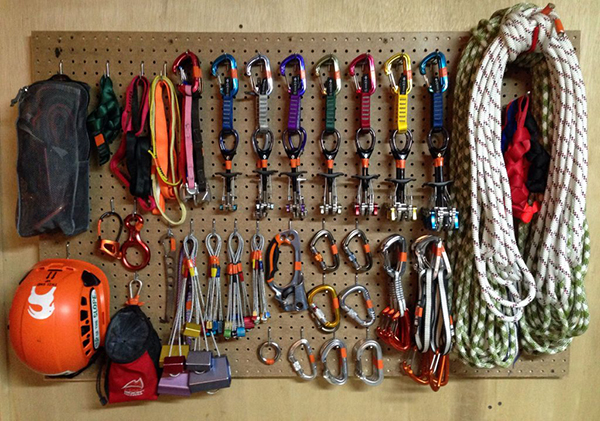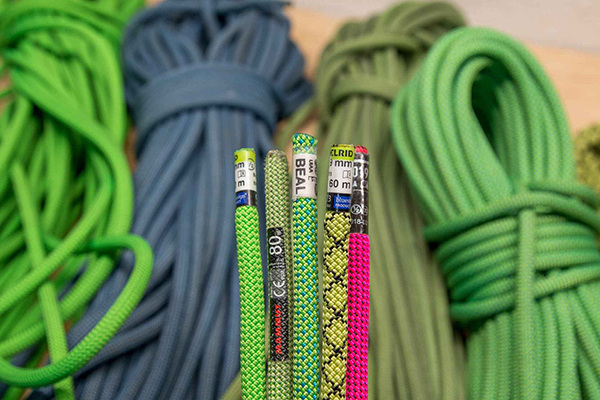[vc_row][vc_column][vc_column_text]
Rescuers’ lives depend upon the integrity of the rescue rope. Proper rope management practices are critically important.
10 Rules of Rescue Rope Care
1. Do not step on ropes.
2. Do not drop hard objects (rocks…) on ropes.
3. Do not have ropes moving across stationary rope or webbing.
4. Protect rope from unnecessary abrasion.
5. Avoid twisting or kinking the rope.
6. Inspect the rope after each use.
7. Maintain a rope usage and inspection log.
8. Wash and dry dirty ropes according to the manufacturer’s instructions.
9. Bag or coil rope when not in use.
10. Store ropes where they will not be exposed to UV radiation (sunlight), high temperatures or chemicals.
Other Considerations
Dirt
Dirt and grit can become embedded in the rope sheath and work its way to the core where it may abrade or cut the fibres and compromise the strength of the rope. Such damage is generally invisible. Keeping the rope clean will help maintain its strength and prolong its life.
UV Radiation
Ultraviolet radiation adversely affects the strength of synthetic ropes and webbing. Avoid prolonged exposure of ropes to sunlight, i.e. do not dry them in direct sunlight.
Drying
A wet rope should never be left coiled or in a rope bag. Ropes should be air-dried in a ventilated area and not with direct heat or in a clothes dryer. Excessive heat damages the synthetic fibres, which weakens the rope.
Friction
Situations where a rope is moving across a stationary rope or webbing is extremely dangerous and can result in the cutting or melting of the non-moving material due to heat from friction. Never run a moving loaded rope against a non-moving length of rope or webbing.
Kinks
Rope kinking and twisting can result from improper unspooling of new rope, improper feeding of the rope into a DCD, or improper coiling of the rope. Unchecked, kinking can turn a length of rope into a rescuer’s nightmare. The use of in-line rappel and descent control devices that do not twist the rope is required. Proper coiling and uncoiling methods, or better yet the use of rope bags, are also helpful in keeping twists and kinks out of the rope.
Inspection
Rescue rope must be carefully inspected after each use to ensure no damage has occurred. There is no foolproof method to determine precisely how much damage has been done to a rope even during normal use. However, there are certain indicators that can be used during a careful examination to determine when a rope should be retired. The rope must be inspected both visually and by feel to detect these indicators.
Inspection is best done when bagging and un-bagging the rope. An experienced team member should run the rope through his/her hands under slight tension to feel and look for any problems.

Signs of Possible Rope Damage
- Signs of possible impact by an object.
- Melting from exposure to heat (hardening or glazing).
- Permanent flattening of any part of the rope.
- The core feels unusually soft.
- Bulges, fat spots or irregularities.
- Cuts in the rope sheath (core showing through).
- Excessive sheath abrasion (more than 50% of surface fibres).
- Excessive sheath slippage.
- Contamination (discolouration, hardening, softening).
If there is any doubt regarding the safety of a rope during an inspection, it must be removed from service and brought to the attention of the Rope Rescue Team Leader. If possible, cut out and discard the damaged section or retire the entire rope. Retired ropes should be destroyed to prevent them from accidentally being put back into service.
A rope rescue task or training operation must be stopped immediately if rope damage is detected. The damage must be brought to the attention of the RRTL. Replacement of the suspect rope is the best course of action. If replacement is not possible, tying an alpine butterfly with the damaged section in the loop of the knot can isolate the damage. Be sure to mark the spot on the rope with a piece of flagging tape and make note that it needs to be removed from service immediately after the task.
A rope rescue task or training operation must be stopped immediately if rope damage is detected.
Washing & Storage
Rescue ropes get dirty with use and can be washed by hand, in a washing machine or with a rope washer, which attaches to a garden hose. To wash by hand, use warm water with a mild soap, rinse thoroughly and air dry. To wash with a machine, tie successive daisy chains in the rope and use a gentle cycle. A front-loading washing machine is best. Check often to ensure the rope does not become tangled.
Rope washers use jets of water and/or bristles to get the rope clean. Be sure to follow the manufacturer’s instructions.
Ropes should be hung to dry in a cool well-ventilated room in loose coils on large diameter pegs or drying racks.
The best way to store rescue ropes is in a rope bag. The bag protects the rope while keeping it ready for immediate use. Recording rope length, ownership, reference number and date of acquisition on both rope ends facilitates identification and tracking, and having one such end protruding from the bag in storage confirms contents more reliably than a tag on the bag.

To Bag a Rope
1. Take the top end of the rope off a stacked pile and tie a butterfly knot or an overhand on a bight ~2 m from the end.
2. Tie the end to an accessible anchor point on the top of the bag (preferably inside the closure). Do not run the rope end through any hole in the bottom of the bag.
3. Stuff the rope directly into the rope bag until the entire rope is inside. Do not add coils to the rope when feeding it into the bag, as this will create kinks.
4. When the entire rope is in the bag, the remaining end of the rope should be tied to the bag’s handle or loop so it won’t disappear inside, can be easily found, and can be distinguished from far end, sometimes referred to as the “bitter end”.
Bagged ropes can be used directly from the bag if they have been properly packed and maintained. The tail of the rope (“bitter end”) should always be clipped into an anchor when the rope is in use as a rescue rope.
Do not store wet ropes in bags due to the possibility of mildew
Replacement
All synthetic materials deteriorate over time, regardless of usage. Ropes and other rescue “software” should be replaced if they fail any of the inspection criteria, or if there is any doubt about the integrity of the item. The maximum lifespan of software must not be more than 10 years, or the maximum lifespan recommended by the manufacturer (often 5-10 years), whichever is less. All ropes conforming to CE standards will have the year of manufacture clearly marked on the tracer ribbon inside the rope. Accurate record keeping is critical!
Rope Log
Every rope should have its own rope log to keep track of that rope’s history. It is important to record all rope use and any damage in the rope log.
[/vc_column_text][/vc_column][/vc_row]

